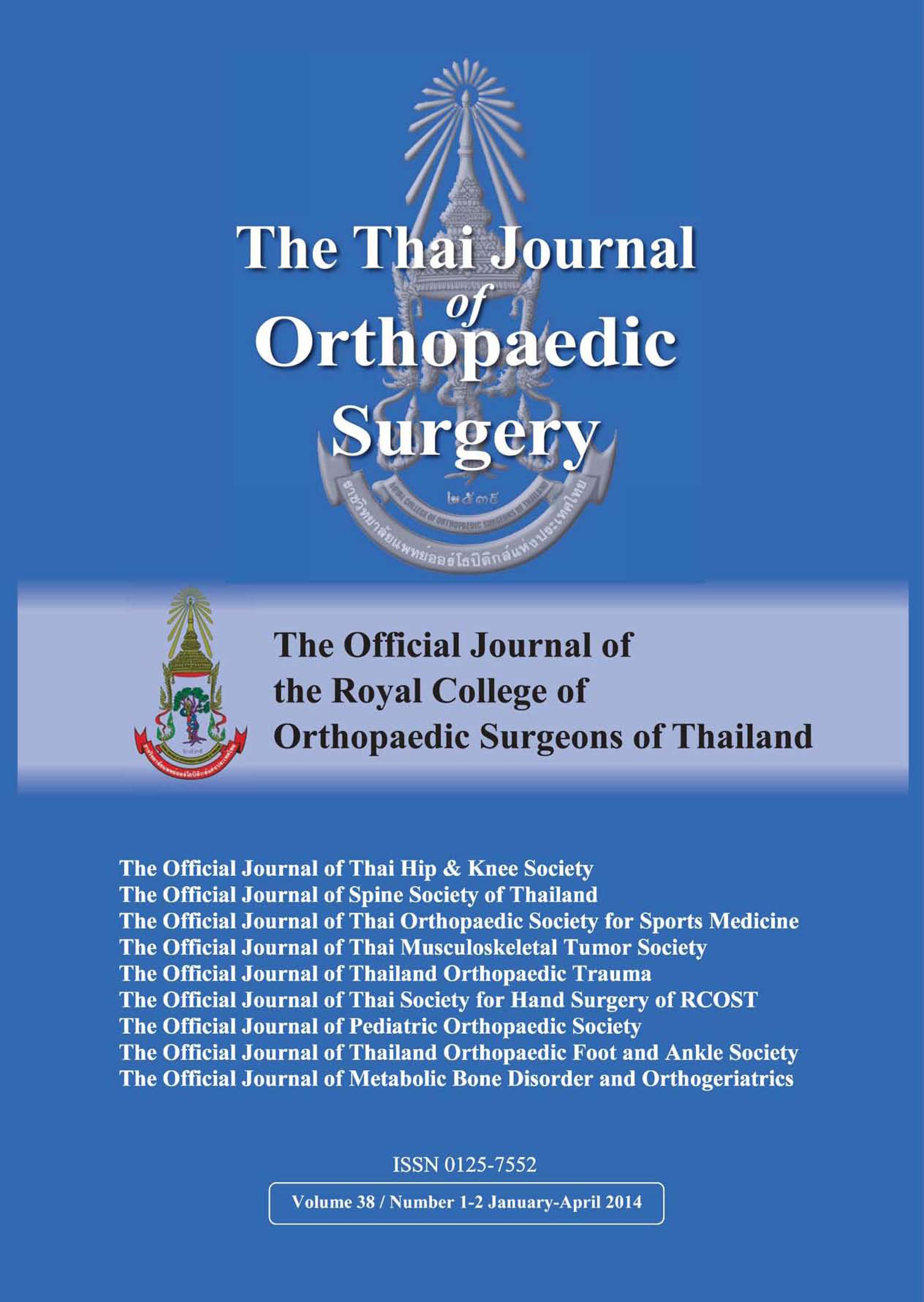Area of Skin Numbness after Less Invasive Total Knee Arthroplasty Surgery: A prospective study
Main Article Content
Abstract
Purpose: The objective of this study was to assess the area of skin numbness after less invasive total knee arthroplasty (TKA) surgery and to compare the area of skin numbness between groups in which the skin incision length was less than or equal to 10 cm and more than 10 cm.
Methods: A prospective study was conducted. 58 TKAs who had undergone primary TKA for osteoarthritis were recruited into this study. All patients were performed by a less invasive surgical technique. The necessity for extending the incision length depended on skin tension, intraoperatively of each patient. Based on the skin incision length, the population was categorized into two groups. Patients with skin incision lengths of less than or equal to 10 cm formed group A (29 patients), whereas patients with a skin incision length of more than 10 cm formed group B (29 patients). The areas of skin numbness were measured with the knee in full extension using a blunt pin for pin-prick sensation. The measurement area of skin numbness was performed at 2 weeks, 1 month, 3 months, and 6 months postoperatively.
Results: In group A, the mean area of skin numbness was 31.74 cm2, 30.94 cm2, 29.58 cm2 and 9.60 cm2 at 2 weeks, 1 month, 3 months, and 6 months postoperatively, respectively. In group B, the mean area of skin numbness was 51.14 cm2, 39.50 cm2, 27.67 cm2 and 11.83 cm2 at 2 weeks, 1 month, 3 months, and 6 months postoperatively, respectively. The area of skin numbness decreased over time in both groups.
Conclusions: This study demonstrated the area of skin numbness after TKA depends on the length of skin incision and that the skin sensation improved with time.
Article Details
References
2. Ritter MA, Herbst SA, Keating EM, Faris PM, Meding JB. Long-term survival analysis of a posterior cruciate-retaining total condylar total knee arthroplasty. Clin Orthop 1994; 309: 136-45.
3. Borley NR, Edwards D, Villar RN. Lateral skin flap numbness after total knee arthroplasty. J Arthroplasty 1995; 10: 13-4.
4. Johnson DF, Love DT, Love BR, Lester DK. Dermal hypoesthesia after total knee arthroplasty. Am J Orthop 2000; 29: 863-6.
5. Sundaram RO, Ramakrishnan M, Harvey RA, Parkinson RW. Comparision of scars and resulting hypoaesthesia between the medial parapatellar and midline skin incisions in total knee arthroplasty. Knee 2007; 14: 375-8.
6. Scuderi GR. Minimal invasive total knee arthroplasty:surgical technique. Am J Orthop 2006; 35: 7-11.
7. Hopton BP, Tommichan MC, Howell ER. Reducing lateral skin flap after total knee arthroplasty. Knee 2004; 11: 289-91.
8. Williams D, Warwick D, Dyson M, Bannister L. Gray’s anatomy. 7th ed. Churchill Livingstone, New York, 1989.
9. Berg P, Mjoberg B. A lateral skin incision reduces peripatellar dysthesia after knee surgery. J Bone Joint Surg Br 1991; 73B: 374-6.


